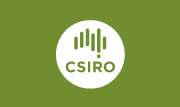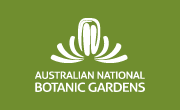November 2006-2007 Report
Plant Breeder’s Rights
During this period 30 Plant Breeder’s Rights (PBR) applications and/or plant specimens were submitted to the Australian Cultivar Registration Authority (ACRA) for comment, with 43 applications from previous years pending comment. Plant specimens were pressed for addition to the ACRA herbarium collection. Since November 2006 ACRA commented on 30 PBR submissions, and in November 2007 approximately 43 PBR submissions were pending comment.
Australian Cultivar Registration Authority cultivar registration
During this period 10 new cultivar applications and/or plant specimens were submitted for registration by ACRA, and an extra 36 ACRA cultivar applications pending comment, were identified. These applications were pending comment for various reasons. Typically applications were awaiting fertile live plant material for colour coding distinctive characters, such as flower or leave colour, and to provide herbarium vouchers for correct identification. In this period 25 ACRA submissions were registered, with 2 ACRA cultivar applications rejected and 8 applications closed due to insufficient information being provided by the breeder.
Australian Plant Name Index
More electronic images of cultivars are being linked to the Australian Plant Name Index, and as new images are added to the Australian Plant Image Index these will be automatically linked with the Australian Plant Name Index.
During this period, n o new records were created in the Australian Plant Name Index to link cultivar names to publications .
International Cultivar Registration Authority
The annual Activity Report to the International Cultivar Registration Authority (ICRA) was submitted on time and the ACRA details on the ICRA web site were updated.
In October 2007, the International Society for Horticultural Science Commission approved the reappointment of ACRA as the official International Registration Authority for Australian plant genera for a further 4 years.
ACRA Herbarium Collection
The ACRA herbarium specimen collection has been moved from the Botany building in the Australian National Botanic Gardens (ANBG) to the Australian National Herbarium (ANH) on the CSIRO site. It is in a compactus on the north side of Level 2, between the end of the monocots and the beginning of the dicots. The new location will provide ACRA with access to more botanical resources, including visiting experts.
Web Statistics
The web site is continuing to be popular. The web visitor statistics for October 2007 are: General ACRA web directory – 27,075 hits (cf. 21,580 in 2006, 19,947 in 2005, 16,415 in 2004)
|
![An Australian Government Initiative [logo]](/images/austgovt_canbr_90px.gif)

![An Australian Government Initiative [logo]](/images/austgovt_canbr_90px.gif)



